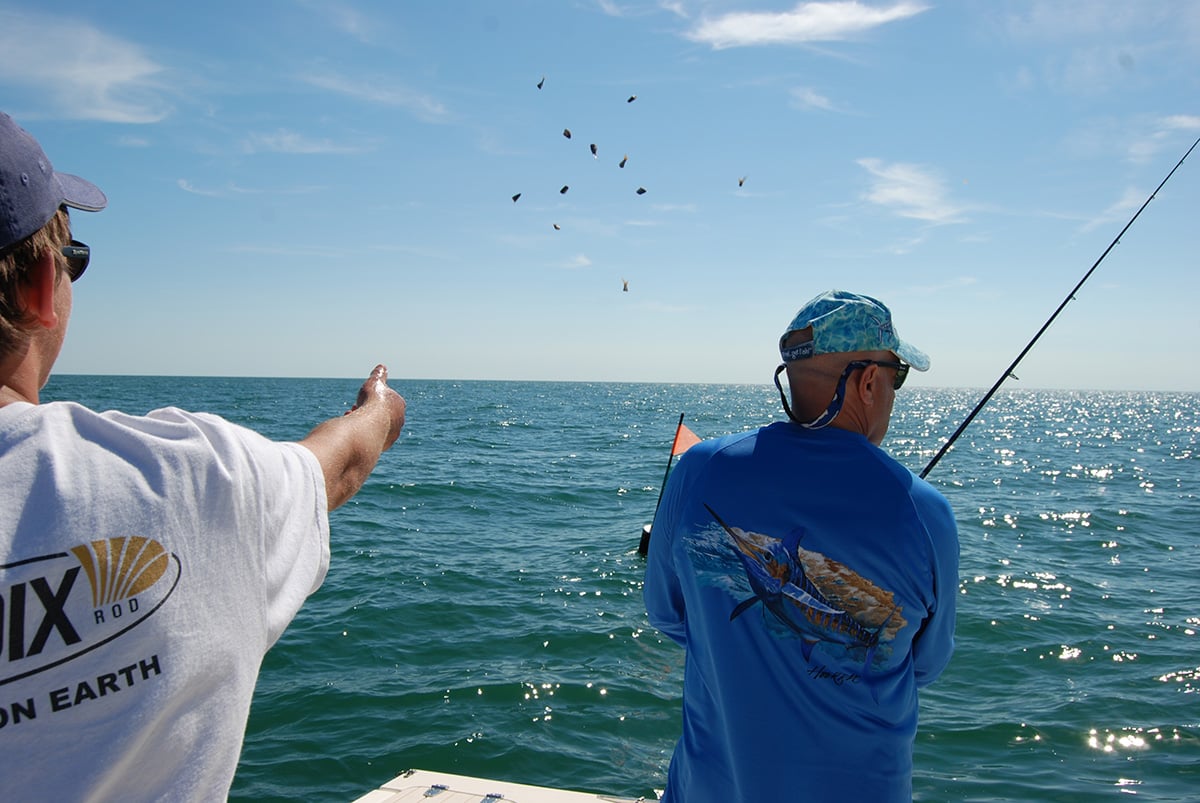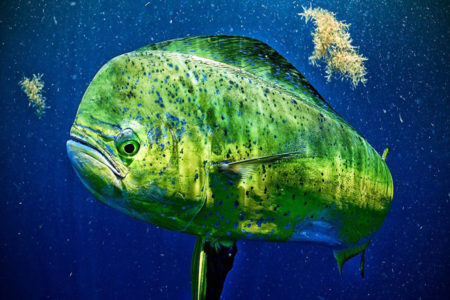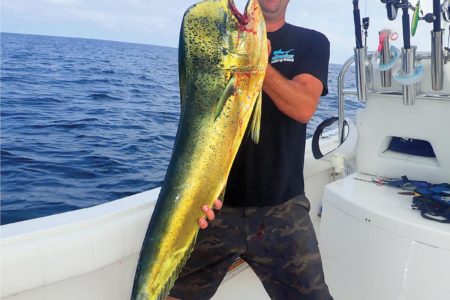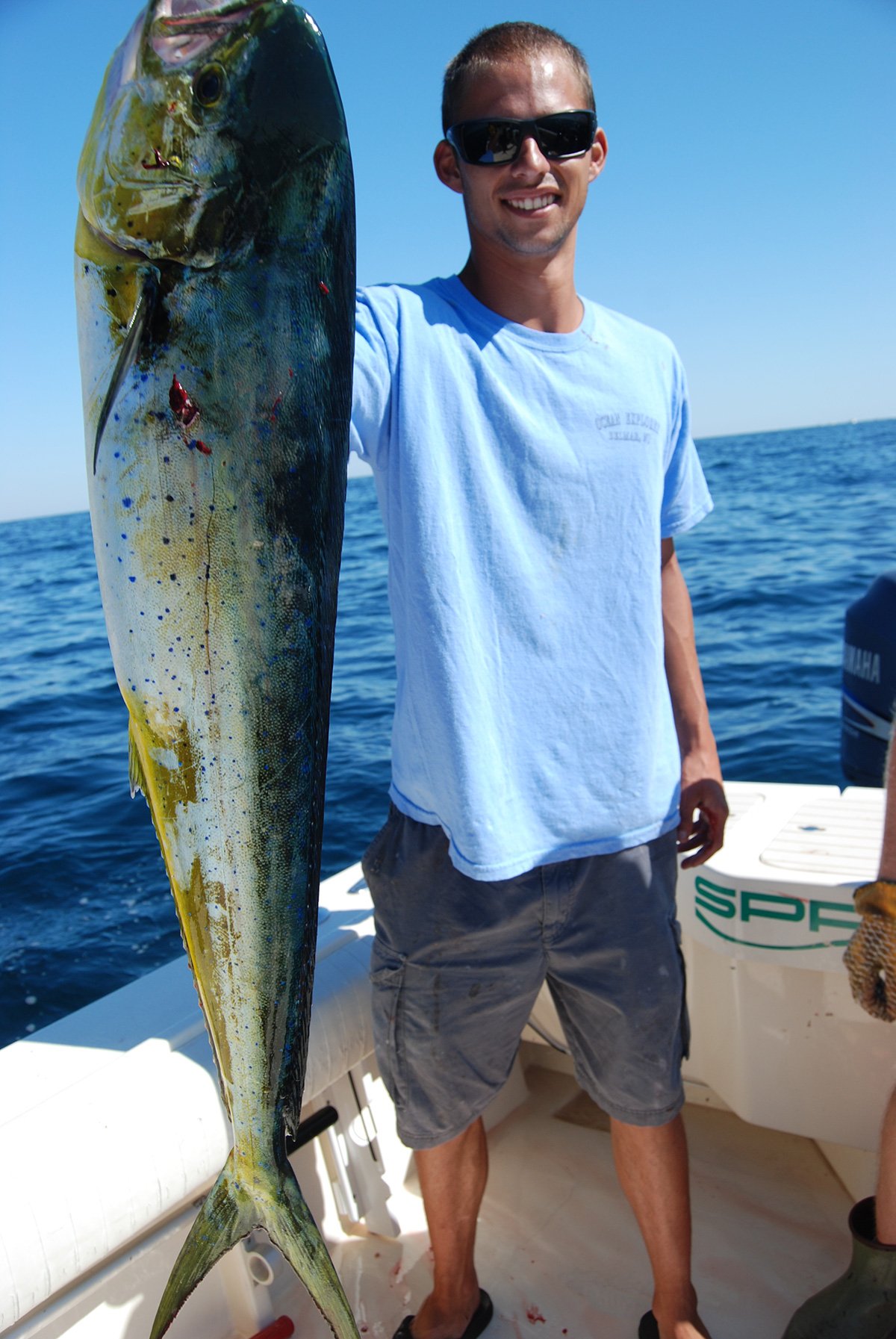
Every summer mahi-mahi migrate into our ocean waters when temperatures approach 74 degrees. Their main area of residence is from 10 to 50 miles out and can be around any lobster pot, buoy, weed line, sargassum, partially submerged pilings, floating timber, or anything else that serves as a source of structure where a pyramid-like food chain can develop.
These pelagic acrobatic feeding machines are one of the fastest growing fish in the ocean. Typical size mahi that we catch range from small chickens up to about 15 pounds. But there is always a really good chance that a bull in excess of 20 pounds or more can be caught (as evidenced each year in The Fisherman’s annual Dream Boat Fishing Challenge). Mahi are also a great tasting fish to eat. Their meat is mild-tasting with a sweet-flavor and a firm texture.
Catching mahi on fly or light spinning tackle is a thrilling and rewarding experience. Although most mahi won’t double you over the gunnels of your boat like a runaway bluefin, they still give you a challenging and adrenaline pumping fight. Their name mahi mahi is indicative of this as it describes their fighting nature; in Hawaiian it means “strong-strong.”
Stealth Approach
When approaching a buoy, pot or any mahi holding structure, I always use a stealth approach to spook not the mahi to go deep. Being prepared with live baits such as peanut bunker or killies will put the mahi into a feeding frenzy when tossed at the target. If you can’t net peanut bunker before you go out, then purchase 4 to 5 quarts of live killies from your tackle shop and use them.
To fish a live peanut bunker use a size 1 Gamakatsu Nautilus Light circle hook tied to a 6-foot length of 20-pound fluorocarbon leader that is tied to your main line with a small barrel swivel. A small egg sinker can also be added above the swivel to get the peanut deeper if needed. Live killies can be fished in the same fashion or they can be placed on a small bucktail jig. For bucktails I like to use the 3/8-ounce Spro Mudkicker bucktail in the crab color. Fishing the killie attached to a bucktail allows you to work the bait with some added attraction. The killie should be hooked through the bottom lip and then out the snout. This allows the tail of the bait to provide the action.
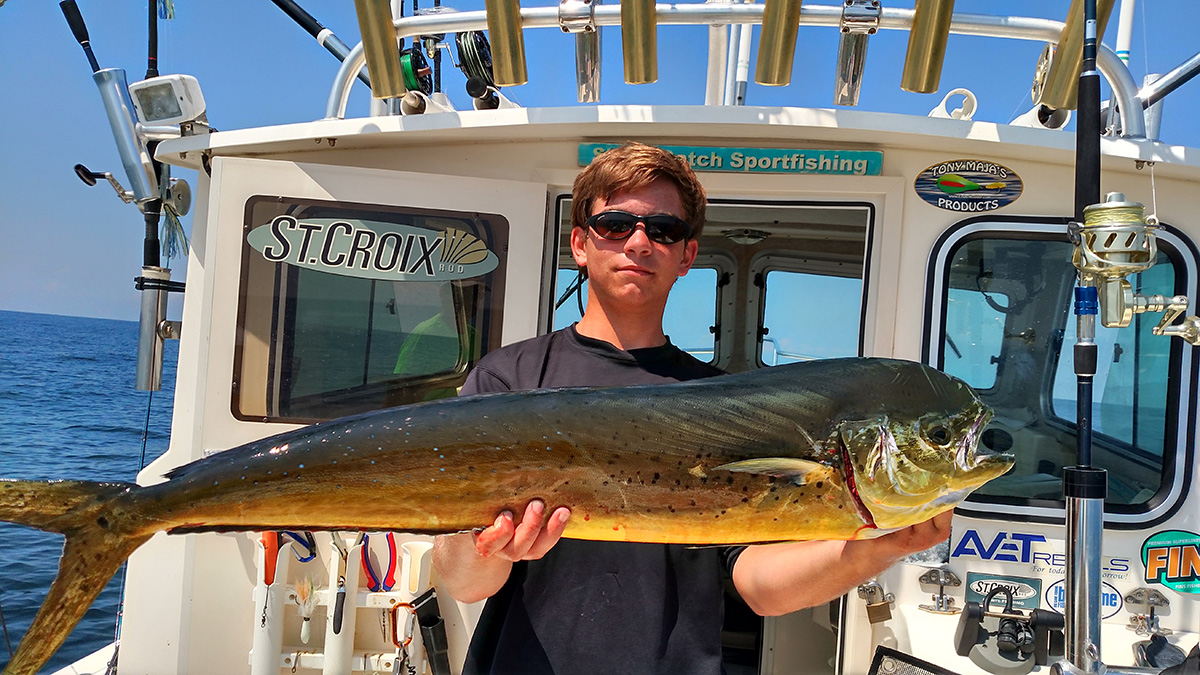
Mahi are not finicky feeders, have a diversified diet and will feed on many types of fish, crabs, and squid. If you don’t have live baits then you can toss chunks at a target and fish with the same. I like to take sardines, cut them into 1-inch chunks and place them on a small circle hook while tossing a bunch of other chunks around a buoy or pot.
Mahi also readily take small soft baits such as Tsunamis or Hogys. One of my favorite setups is a 4-inch pink skinny Hogy rigged on a 1/2-ounce pink Spro Squidtail jig. Prismatic swimming plugs, small metals and poppers can also be cast around a target. For my light tackle set-up, I like to use the St. Croix 7-foot Legend Trek Medium Power Inshore spinning rod spooled with 30-pound braid tied to a 6-foot stretch of 20-pound fluorocarbon leader.
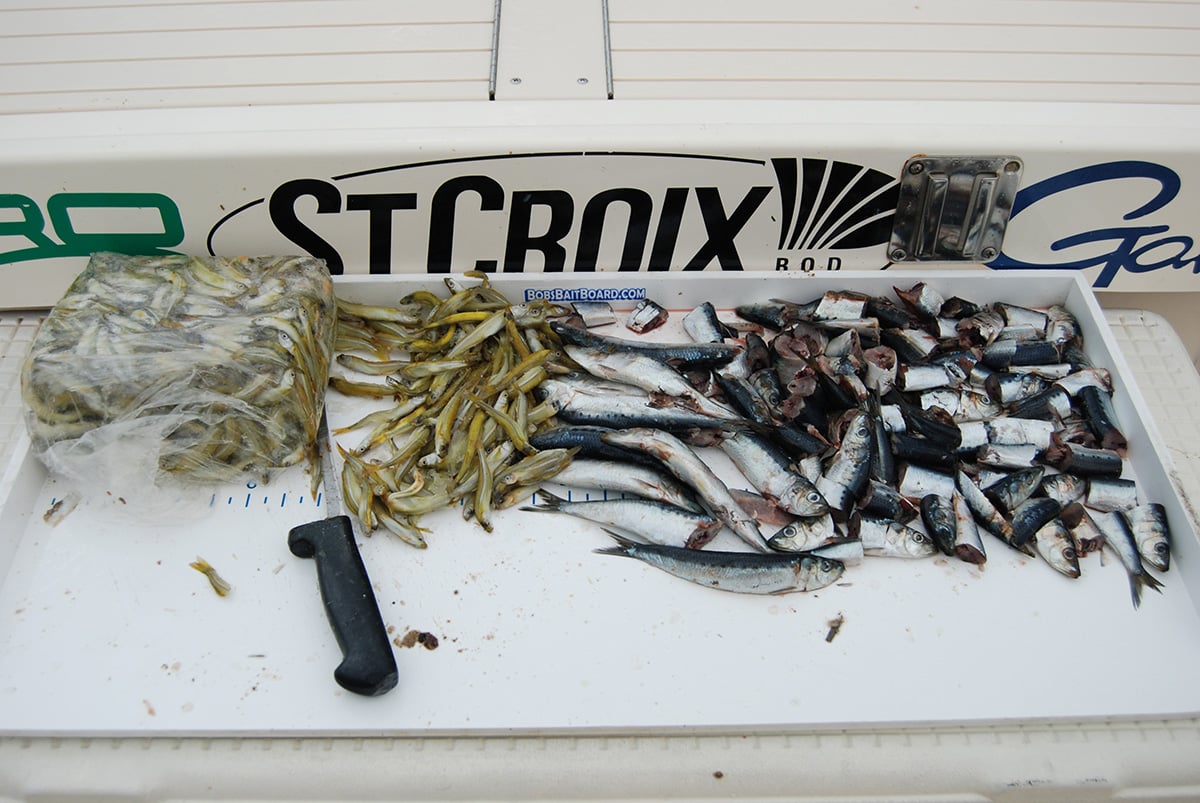
Adrenaline Rush
One of my favorite methods of catching mahi is to catch them on the fly. This is the ultimate adrenaline rush for many fly anglers, and there’s no need to take exotic trips to catch them since they are right here in our backyard. Brightly colored and flashy flies work best to draw strikes. Colors such as bright orange, yellow, florescent green, pink, white, or a blend of these colors will work well.
I toss baits at the target to get the mahi in a feeding frenzy to help the fly angler connect. Or I hook a mahi on bait and keep it in the water next to the boat to attract others. If I am tossing peanuts that have a wide profile then I fish Geno’s Baby Angels or wide bodied deceivers. If the bait’s profile is more slender in appearance, such as when tossing fresh spearing, then Popovics’s simpleclones or Skok’s mushmouths are my first choices.
I normally fish these flies on 9-foot, 9- to 10-weight St. Croix Legend Elite fast action rods. I use these weights because my hope is always that a big bull in the upper teen to 20-pound range is waiting to pounce. I use a clear intermediate fly line with 9 feet of 20- to 30-pound test fluorocarbon leader. If the mahi of the day are only smaller chickens then I break out the 7- to 8-weight rods for some fly rod bending fun.
